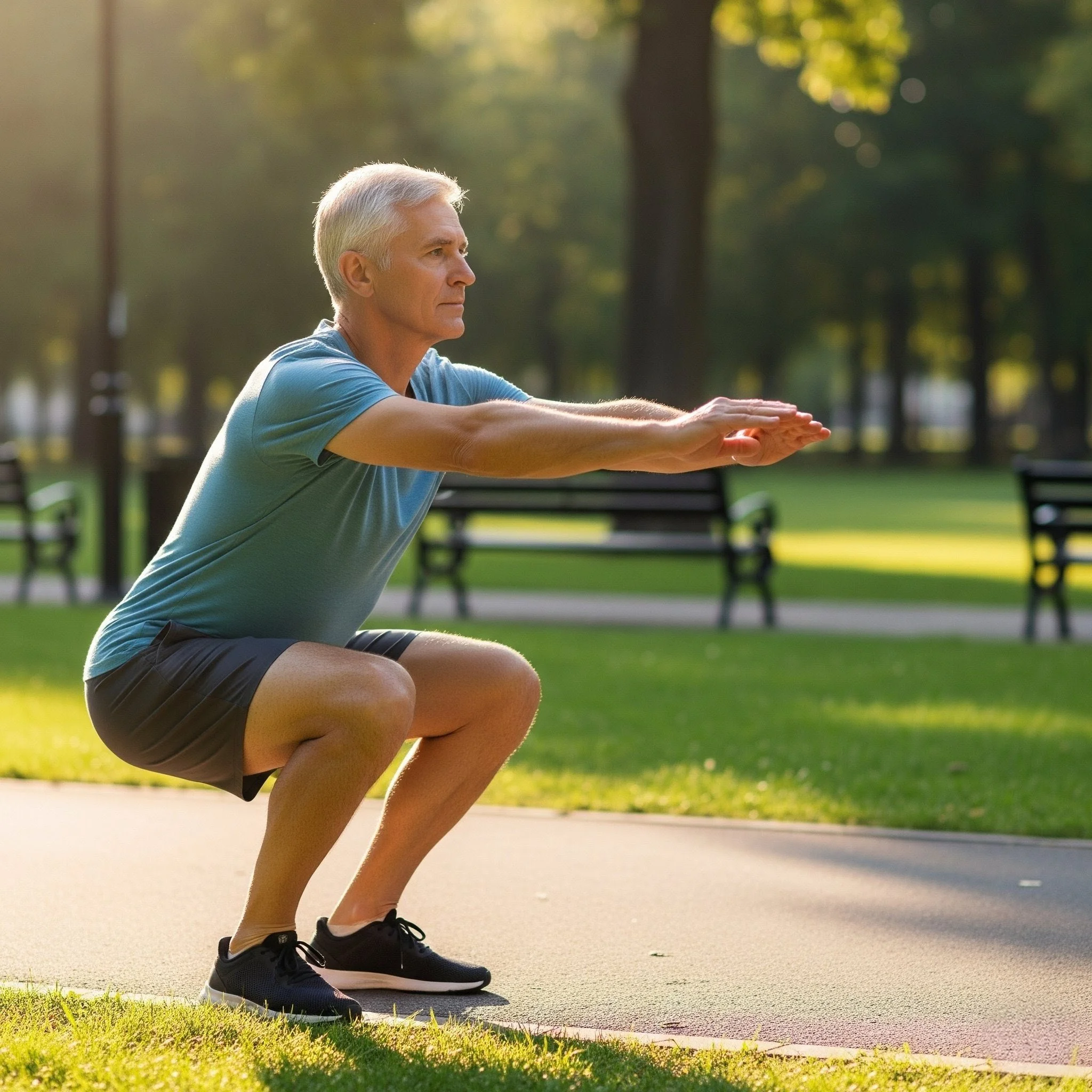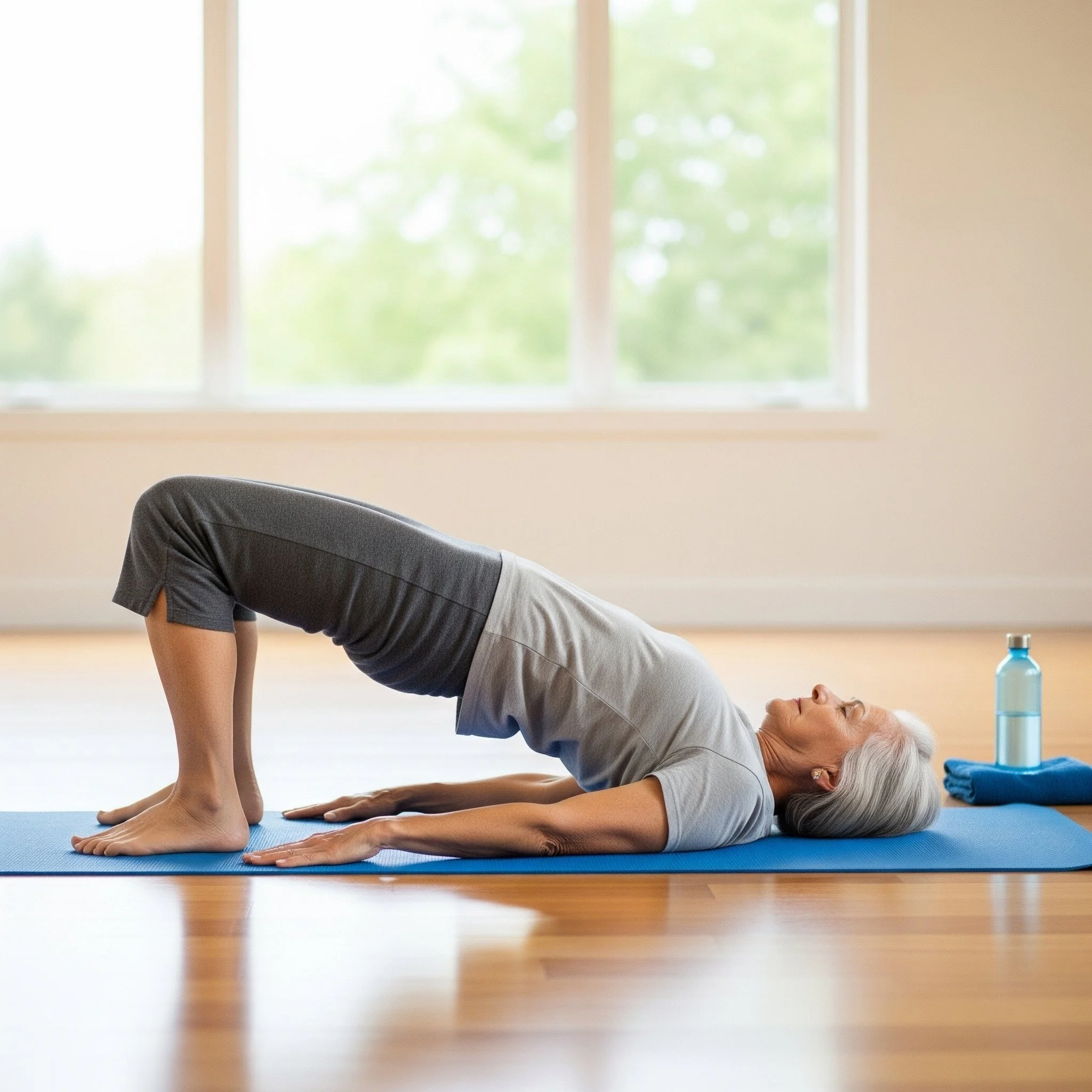Strength Training for Seniors: The Key to Staying Strong, Independent, and Healthy
Why Should Seniors Strength Train?
Seniors should strength train because it prevents muscle loss, improves bone density, reduces arthritis pain, lowers the risk of falls, and helps manage weight. Strength training also supports brain health, eases low back pain, and boosts independence by making everyday activities like climbing stairs, carrying groceries, and standing from a chair easier.
Strength Training for Seniors: The Key to Staying Strong, Independent, and Healthy
Aging is not an excuse to slow down, it is the reason to keep moving. If you are in your 50s, 60s, 70s or beyond, strength training is not optional, it is essential. Forget the idea that lifting weights is only for the young or for people who want to build bulging muscles. For seniors, strength training is about independence, resilience, and being able to do the things you love without relying on someone else.
I have coached people for more than 15 years, and one thing is crystal clear. The people who prioritize strength age better. They move better, recover faster, and maintain a higher quality of life. Strength training is the closest thing you will find to a real-life fountain of youth.
The Silent Battles of Aging and How Strength Training Helps
Osteoporosis: Protecting Your Bones Before They Break
Osteoporosis affects more than 10 million Americans over age 50, and another 34 million have low bone density. That means almost half of adults in that age bracket are at risk for fractures. Hip fractures are especially dangerous, with nearly 20 percent of older adults who suffer one not surviving the following year.
Strength training is one of the only proven, non-medication strategies to improve bone density. Lifting weights or doing resistance band work tells your bones to stay strong. The stress from resistance stimulates bone-building cells, making bones denser and less likely to break.
Arthritis: Strength Is Medicine for Your Joints
Arthritis is the number one cause of disability in older adults, affecting nearly half of people over 65. Many think they should avoid exercise when they feel joint pain, but the opposite is true. Strength training strengthens the muscles around your joints, reduces pressure on cartilage, and improves mobility.
Even light resistance training helps reduce pain, stiffness, and swelling. Controlled movements, training through full ranges of motion, and gradually increasing resistance can build a support system for your joints that makes daily movement easier.
Low Back Pain: Stability Starts with Strength
Low back pain is one of the most common complaints in older adults. Up to 80 percent of adults experience it at some point, and it becomes more frequent with age.
Strength training reduces low back pain by strengthening the muscles that support your spine and hips. Core exercises like bridges, bird dogs, and rows improve posture and stability, taking pressure off the lower back. A stronger core means fewer aches and more freedom of movement.
Obesity: Muscle Helps Fight the Metabolism Slowdown
As we age, metabolism naturally slows down. Add in muscle loss and less activity, and weight gain becomes easier. More than 40 percent of adults over 60 are classified as obese, which raises the risk of diabetes, heart disease, sleep apnea, and joint pain.
Strength training is one of the best tools to fight this. Muscle is metabolically active tissue, which means the more you have, the more calories you burn at rest. Combine resistance training with walking or cycling and you have a powerful way to manage weight, even as your metabolism slows.
The Big Picture Health Benefits
• Stronger bones that resist fractures
• Improved joint health and less arthritis pain
• Reduced risk of falls through better balance and stability
• Lower blood pressure and better blood sugar control
• Less low back pain and stronger posture
• Better weight management with higher metabolism
• Sharper brain function and reduced risk of dementia
Strength training is not about chasing a six-pack. It is about building a body that lets you stay active and independent.
A Practical Exercise Guide for Seniors
You do not need to train like a bodybuilder to get results. A simple framework works best:
Mode: Walking, stationary bike, water activities such as swimming or water aerobics, and strength training
Frequency: 3 to 5 days per week of moderate intensity activities or at least 3 days per week of vigorous activity
Intensity: Easy to moderate, where you feel light sweating and slightly elevated breathing but can still hold a conversation
Duration: 30 to 60 minutes per day. If that feels like too much, break it into shorter sessions of 8 to 10 minutes spread throughout the day
Strength Focus: 2 to 3 full-body sessions per week. Use bodyweight, resistance bands, dumbbells, or machines. Prioritize major movement patterns such as squats, hinges, pushes, pulls, and carries
Sample Strength Routine for Seniors
Sit-to-Stand from a chair, 3 sets of 10
Wall Push-Ups, 3 sets of 8 to 12
Step-Ups onto a low platform, 3 sets of 8 each leg
Resistance Band Rows, 3 sets of 10
Farmer’s Carry holding light weights or groceries, walk 30 to 45 seconds, repeat 3 times
Pair this with walking, cycling, or swimming and you have a complete program that builds muscle, protects bones, and improves cardiovascular health.
Real-Life Wins: Why Strength Training Is Independence Training
I have had clients in their 70s who once feared climbing stairs now hike trails without hesitation. Others with arthritis have reported less knee pain within weeks of consistent training. Many who once felt unsteady on their feet gained back confidence because their legs and core were finally strong enough to keep them balanced.
This is not just about gym workouts. It is about living life without fear of falling, being able to get off the floor without help, and enjoying retirement years without being limited by weakness.
Final Thoughts: Aging Strong Is a Choice
Aging is inevitable. Weakness is optional. Strength training gives you control over how you age. Every rep you do is an investment in staying strong, sharp, and independent.
It is never too late to start. Strength training is not dangerous when done correctly, and your body is capable of more than you think.
Ready to take the next step toward staying strong, balanced, and independent? I put together a free Balance and Stability Ebook designed to help you improve your balance in just minutes a day. It is the perfect companion to strength training and will help you move with confidence.




